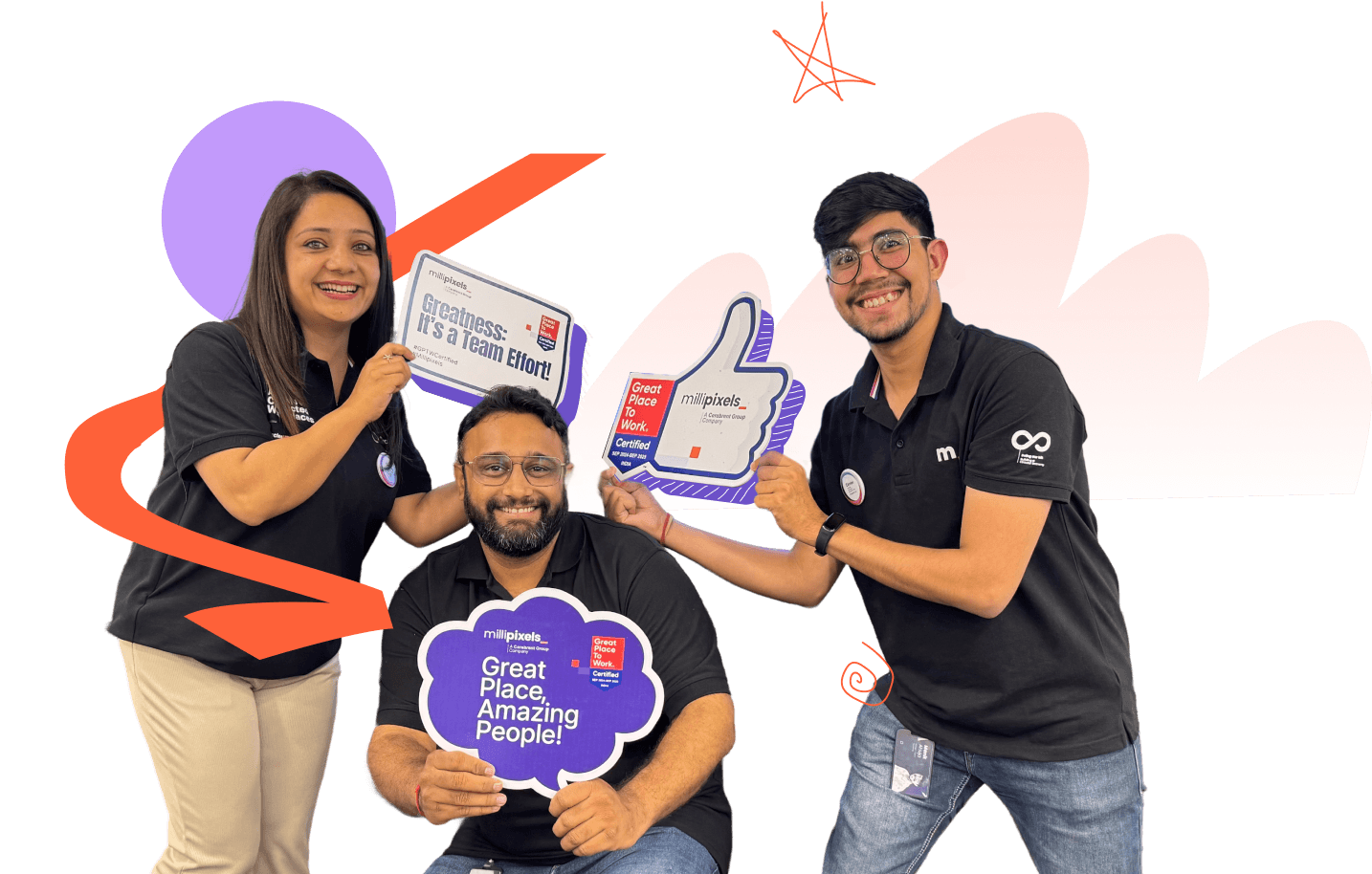Blog
How to Measure Outsourcing Success by Focusing on Business KPIs, Not Just SLAs
Traditional SLAs don't reflect the real value of modern outsourcing. Discover why business KPIs, like growth, retention, and innovation, are becoming the new benchmarks
November 12, 2025

Introduction
Outsourcing has evolved. What began as a cost-cutting tactic has transformed into a strategic enabler—powering everything from digital transformation to innovation acceleration. Yet, the way most organizations measure their outsourcing success is stuck in the past.
Service Level Agreements (SLAs)—once the gold standard for accountability—no longer reflect the true value of a modern outsourcing relationship. They track activity, not impact. They ensure delivery, not differentiation. And in a world where agility, innovation, and customer experience drive competitive edge, that’s a problem.
To use the full potential of your outsourcing partnerships, you need a new measurement lens—one that’s aligned with business KPIs, not just service metrics. This article talks about why it’s time to shift from managing vendors to mobilizing strategic value partners—and how rethinking your measurement model is the first step.
Outsourcing Is No Longer Just a Backend Strategy—It’s a Growth Lever
Outsourcing used to be about cost-cutting—shifting non-core functions to third parties for cheaper, faster execution. But today’s enterprises are playing a different game. In the times of rapid transformation, outsourcing has become a lever for capability, agility, and innovation.
Forward-thinking CXOs no longer treat vendors as arms-length executors but as co-creators of business value. Partners are expected not just to deliver outputs, but to accelerate outcomes—helping teams enter markets faster, delight customers more deeply, and drive measurable growth.
And yet, our measurement systems haven’t evolved to match this ambition. Most organizations are still evaluating strategic outsourcing engagements with outdated tools—metrics focused on inputs and activities rather than results.
Here’s the truth: you can outsource execution, but you can’t outsource accountability. If your measurement framework doesn’t reflect impact, you’re not leading a strategic partnership—you’re managing a transaction.
The Illusion of Green SLAs in a Red Business
If you’ve ever run an outsourcing engagement, you’ve likely seen the classic mismatch: the vendor hits all the Service Level Agreements (SLAs), but the business is still struggling.
Uptime is great. Ticket resolution speed is useful. But none of these metrics answer the fundamental question: is this partnership moving the business forward?
The problem with traditional SLAs is that they optimize for operations, not outcomes. They measure process compliance, not business performance. Worse, they often create a false sense of success—everything looks “green” on the dashboard, while the real objectives are slipping.
Consider this vignette: a fintech company outsources development for a new onboarding feature. Every SLA is met—code delivered on time, QA completed, bugs resolved quickly. But the product still launches six weeks late, and adoption is underwhelming. Why? Because no one measured alignment with user needs or market timing. The vendor did what was asked. But what was asked wasn’t enough.
This is the cost of measuring what’s easy instead of what’s essential.
KPIs as the New Currency of Strategic Outsourcing
If SLAs tell you what got done, KPIs tell you why it mattered.
Business KPIs—Key Performance Indicators—are emerging as the new gold standard for measuring the impact of outsourcing. They focus on results that matter to the business: growth, retention, customer experience, speed to market, innovation velocity.
Let’s contrast the two:
- SLA: “Resolve 95% of incidents within 2 hours.”
- KPI: “Reduce recurring incidents by 30% over the next quarter.”
The first tells you whether the vendor reacted efficiently. The second tells you whether the problem is going away.
KPI-driven outsourcing requires you to move beyond process metrics and into performance metrics. It demands clarity on what success actually looks like—not for the vendor, but for the business.
To get it right, organizations need to embrace both leading indicators (e.g., sprint velocity, feature deployment rate) and lagging indicators (e.g., NPS improvement, revenue uplift). The dashboard must shift from reporting to foresight.
The Co-Ownership Model: Designing KPIs Together
Business-aligned KPIs can’t be dictated top-down or defined unilaterally. If your goal is true partnership, your metrics must reflect shared ownership.
The best-performing outsourcing relationships don’t just start with an RFP. They begin with a workshop.
In a Joint KPI Design Session, both client and vendor stakeholders align on:
Business context and strategic priorities.
User outcomes that matter most.
Success metrics tied to business value.
How progress will be tracked—and by whom.
These workshops do more than define numbers. They build alignment, ownership, and accountability on both sides. They shift the vendor’s mindset from “what do we need to deliver?” to “what outcomes are we driving together?”
In this model, the vendor isn’t just executing—they’re co-architecting the path to success.
Transforming Governance: From Oversight to Outcome Acceleration
Traditional outsourcing governance is a compliance engine—focused on checklists, SLA audits, and penalty clauses. But when you’re measuring impact, governance becomes a growth enabler.
Outcome-centric governance reimagines vendor management as a dynamic collaboration. Instead of monthly SLA reviews, you’re hosting strategic OKR reviews. Instead of escalations, you’re running war rooms focused on breakthrough progress.
One practical shift is to replace static dashboards with a Business Impact Heatmap—a visual, cross-functional scorecard that shows where the outsourcing engagement is driving traction, and where it’s stuck. It ties every delivery stream to a strategic business objective, enabling rapid decision-making.
In this model, governance isn’t about catching mistakes—it’s about accelerating outcomes.
Incentivizing What Matters: Contracts That Reward Impact
You get what you pay for. And if you’re paying for time and effort, that’s what you’ll get—regardless of results.
To drive real business impact, organizations must rethink their commercial models. Time-and-materials and fixed-fee contracts have their place, but they aren’t built for innovation or accountability.
Enter performance-based contracts—where the vendor’s compensation is directly tied to business KPIs. Think:
- Bonuses for feature adoption thresholds.
- Revenue-sharing for co-developed IP.
- Penalties for lagging CX scores.
Done right, this model aligns incentives with impact. It turns vendors into growth partners who are as invested in the outcome as the client is.
This doesn’t mean every contract should be variable. But it does mean introducing levers that reward value creation—not just effort spent.
The Shift in Metrics Signals a Shift in Mindset
Adopting a KPI-first approach to outsourcing isn’t just about better reporting—it’s about a fundamental shift in mindset.
It requires:
- Cultural alignment: Both parties need to believe in transparency, agility, and continuous improvement.
- Shared data systems: Impact measurement requires integrated dashboards and shared visibility.
- A long-term view: KPIs often reflect strategic goals that take quarters to realize—not just quick wins.
This model is harder. It requires more alignment, more negotiation, and more trust. But it’s also exponentially more rewarding.
Because in the end, businesses don’t win by checking boxes—they win by moving the needle.
Conclusion: Don’t Just Manage Vendors—Mobilize Value Partners
Outsourcing is no longer just about cost. It’s about capability, agility, and impact. In today’s market, your external partners should be helping you drive transformation—not just transactions.
That means measuring what really matters. Not uptime. Not ticket closures. But growth. Speed. Innovation. Outcomes. You don’t measure business value by how many bugs were fixed. You measure it by the results your customers feel—and the momentum your business gains.
At Clarient, we help enterprises reframe outsourcing through the lens of impact. From co-defining KPIs to designing governance that accelerates outcomes, we don’t just deliver—we partner for growth. Ready to measure what truly matters? Let's connect!

Parthsarathy Sharma
B2B Content Writer & Strategist with 3+ years of experience, helping mid-to-large enterprises craft compelling narratives that drive engagement and growth.
A voracious reader who thrives on industry trends and storytelling that makes an impact.
Share
Are you seeking an exciting role that will challenge and inspire you?

GET IN TOUCH